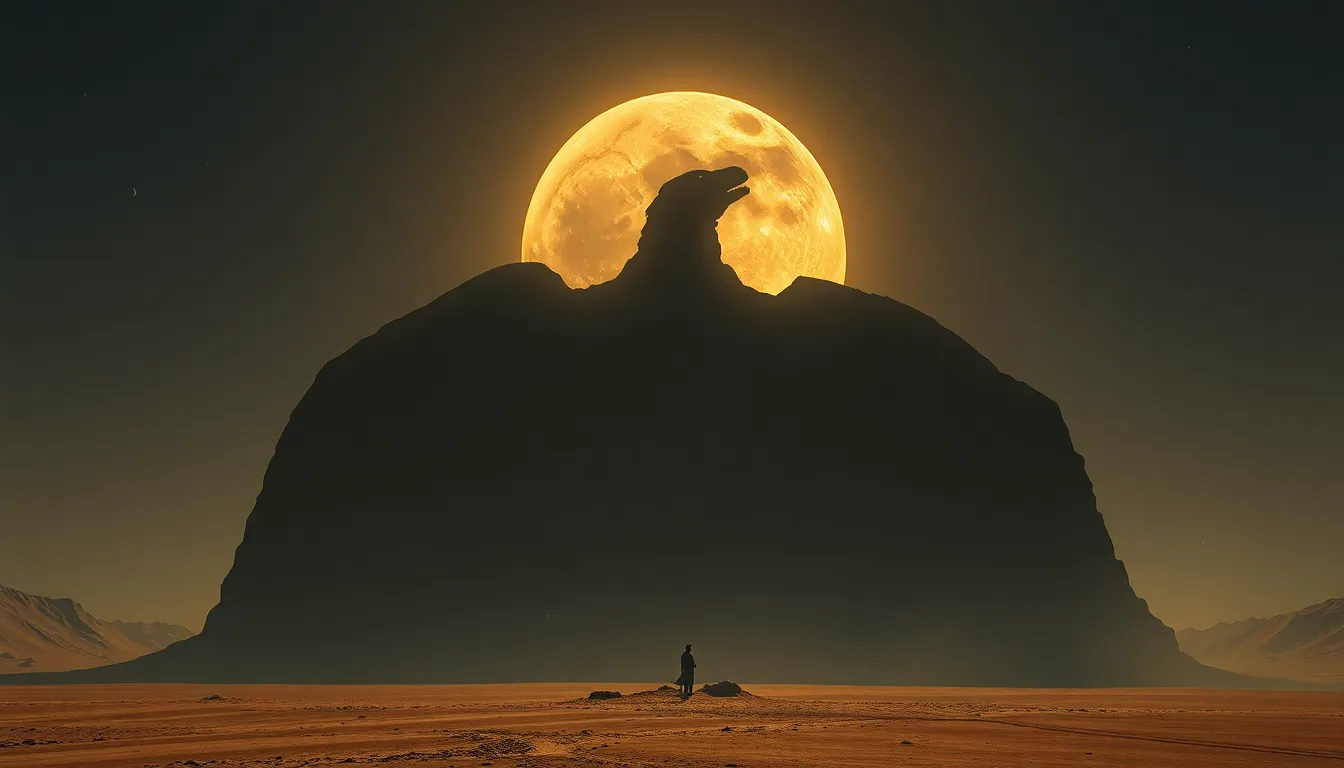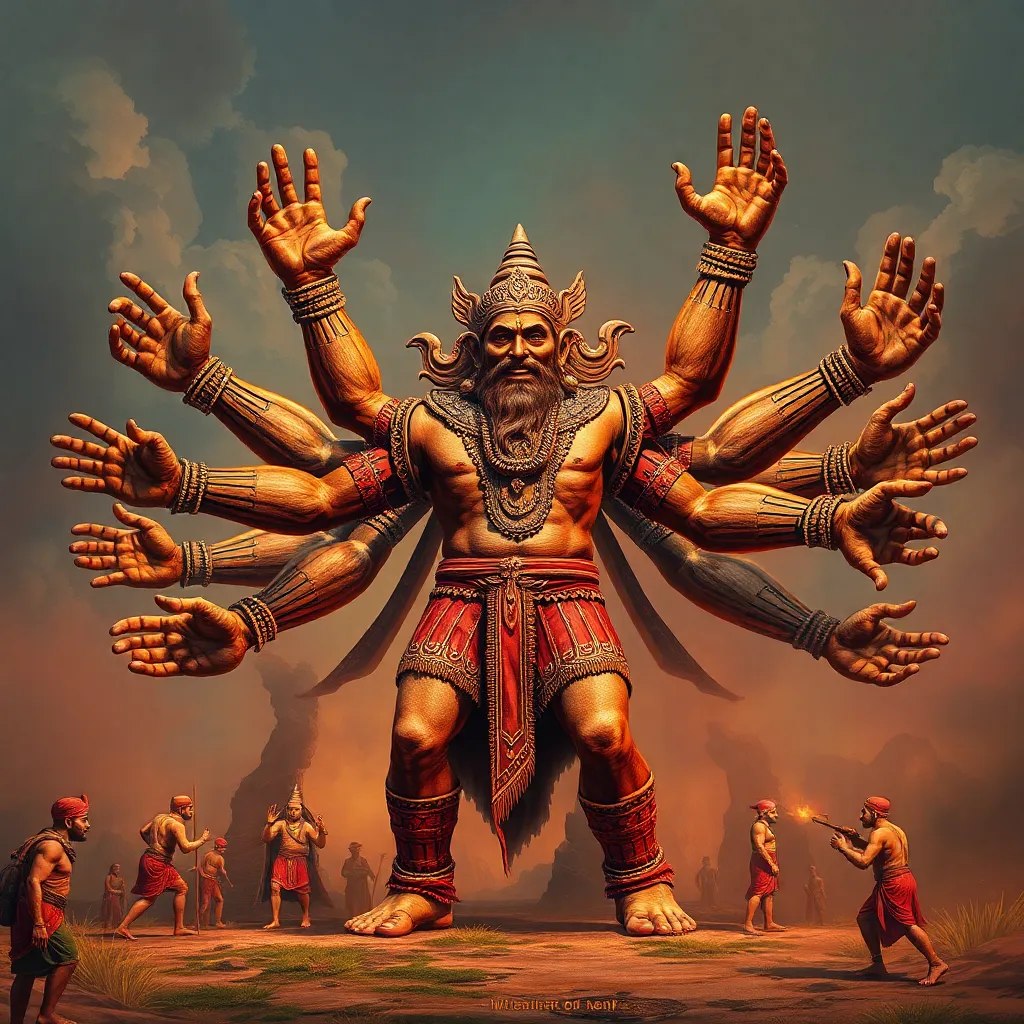Chasing the Shadow of the Roc: Exploring the Origins of the Myth in Arabia
I. Introduction
The Roc, a colossal bird found in various mythologies, particularly in Arabian folklore, has captivated the imaginations of many across cultures and centuries. Known for its immense size and formidable power, the Roc is often depicted as a creature that can carry off elephants and ships. Its significance in Arabian culture is profound, influencing literature, art, and oral traditions.
This article aims to investigate the origins of the Roc myth, its cultural implications, and how it has evolved over time within Arabian folklore. By examining various aspects of the Roc, we will uncover its multifaceted role in the rich tapestry of Arabian mythology.
II. The Roc: A Giant in the Sky
The Roc is described as a gigantic bird, often resembling an eagle or a vulture, with wings capable of creating storms and lifting heavy objects. Its characteristics include:
- Immense size, often depicted as large enough to carry off large animals.
- Majestic plumage and powerful wings that symbolize strength.
- A fierce protector of its young, often portrayed in tales guarding its nest.
When comparing the Roc to other mythical creatures, such as the Griffin or the Garuda, it is evident that giant birds hold a special place in many cultures. While the Griffin combines the features of an eagle and a lion, the Garuda is a bird-like creature from Hindu mythology, both representing power and nobility in their respective narratives.
In tales and legends, the Roc plays a crucial role. It is often featured in stories of adventure, serving as a formidable opponent or a majestic ally. Its sheer size and power evoke a sense of wonder and fear, making it a central figure in many narratives.
III. Historical Context of the Roc in Arabian Culture
The Roc’s origins can be traced back to pre-Islamic Arabian literature. Early references to the Roc appear in texts such as “One Thousand and One Nights,” where it is depicted as a creature of great strength and significance. These stories were often shared among traders, sailors, and travelers, contributing to the spread of the myth.
The influence of trade routes on the dissemination of myths cannot be overstated. As merchants traveled across the Arabian Peninsula and beyond, they shared stories of the Roc, leading to its incorporation into various cultural traditions. The Roc’s presence in the works of famous scholars and travelers, such as Marco Polo, further solidified its place in historical accounts.
IV. The Roc in Arabian Literature and Oral Traditions
Key literary sources featuring the Roc include:
- “One Thousand and One Nights” – where the Roc is featured in the tale of Sinbad the Sailor.
- Al-Baladuri’s historical texts, which reference the Roc in the context of Arabian mythology.
- Various poems and oral traditions that celebrate the Roc’s grandeur.
Oral storytelling has played a vital role in preserving the myth of the Roc. Generations of storytellers have passed down tales of its might, ensuring its survival in the cultural memory of the region. Different regions interpret the Roc in unique ways, reflecting local beliefs and values.
V. Symbolism and Themes Associated with the Roc
The Roc is rich in symbolism, often representing:
- Power and majesty: The sheer size of the Roc symbolizes dominance over nature and human struggles.
- Adventure and exploration: Many stories involving the Roc revolve around journeys into the unknown, embodying the spirit of adventure.
- Nature and the supernatural: The Roc often bridges the gap between the natural world and the realm of the supernatural, serving as a guardian of sacred spaces.
VI. Cultural Impact and Legacy of the Roc Myth
The Roc’s influence extends into modern literature and media. It has appeared in:
- Fantasy novels, where it is often portrayed as a majestic creature.
- Films and television shows that draw upon Arabian mythology.
- Art and literature that reflects the enduring legacy of the Roc in contemporary culture.
The Roc continues to inspire contemporary Arabian storytelling and art, symbolizing the rich heritage of the region. It serves as a cultural icon, representing not only the power of nature but also the creativity of the human imagination.
VII. Comparative Analysis: The Roc and Other Mythical Creatures
When comparing the Roc to other mythical creatures, we find both similarities and differences:
- Similarities with the Griffin: Both are powerful and majestic, often depicted as protectors.
- Contrasts with the Garuda: While both are revered, the Garuda has specific religious significance in Hindu mythology.
- Universal appeal: The fascination with giant birds transcends cultures, highlighting a common human admiration for the majestic and powerful.
In the broader context of mythological studies, the Roc holds a unique place, showcasing the interconnectivity of folklore across different cultures.
VIII. Conclusion
In conclusion, the Roc’s origins and significance in Arabian culture reveal a rich tapestry of mythology intertwined with the human experience. Its enduring legacy highlights the importance of myth in shaping cultural identities and values.
The Roc myth continues to inspire and provoke thought, serving as a reminder of the power of storytelling. Future research on mythological creatures in folklore could further uncover the intricate connections between cultures and the universal themes that resonate across time and space.



